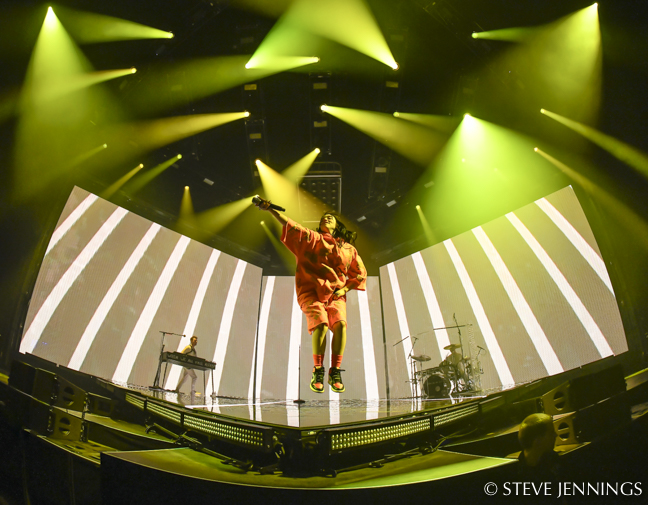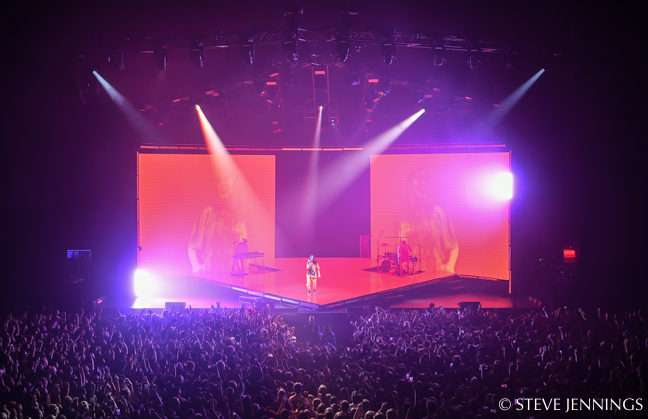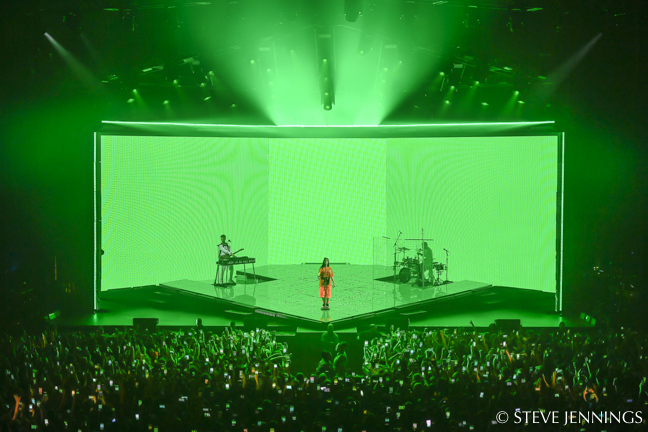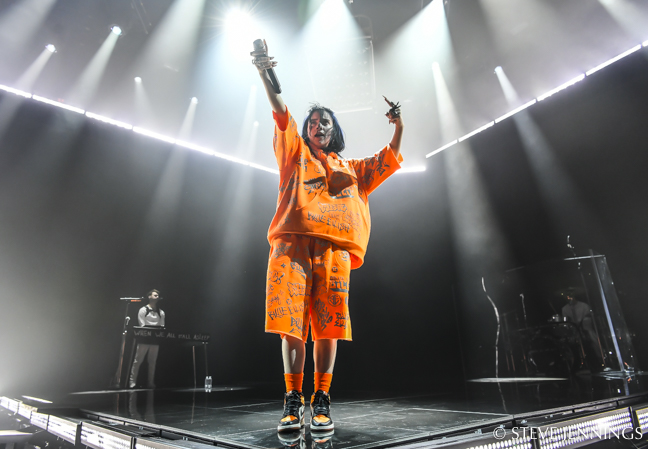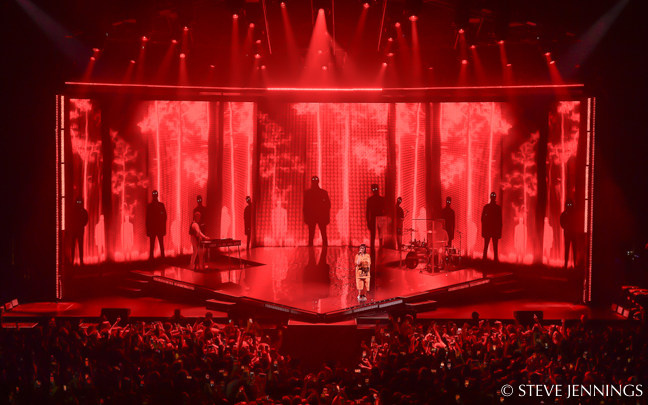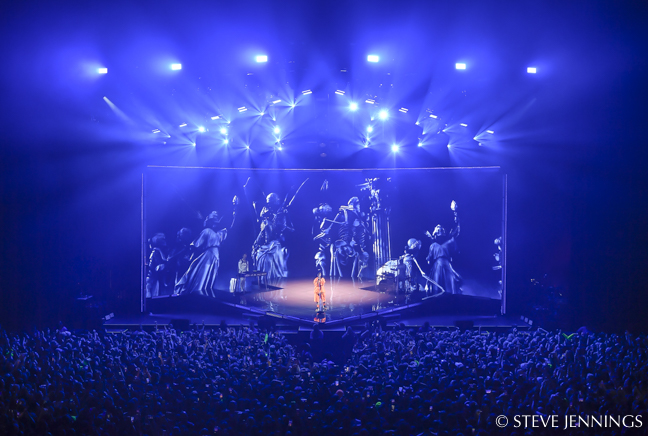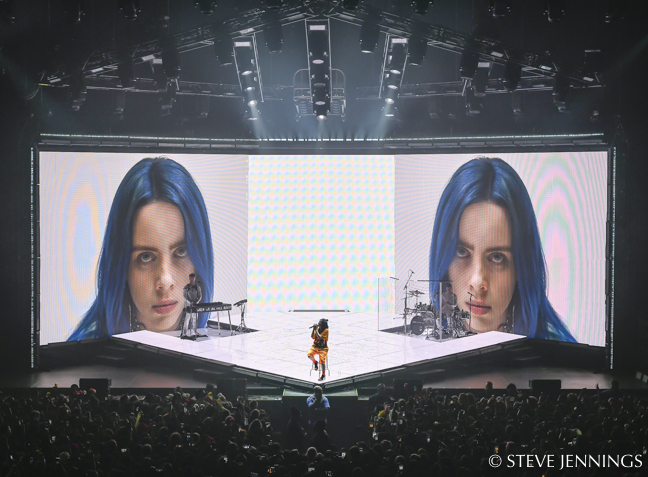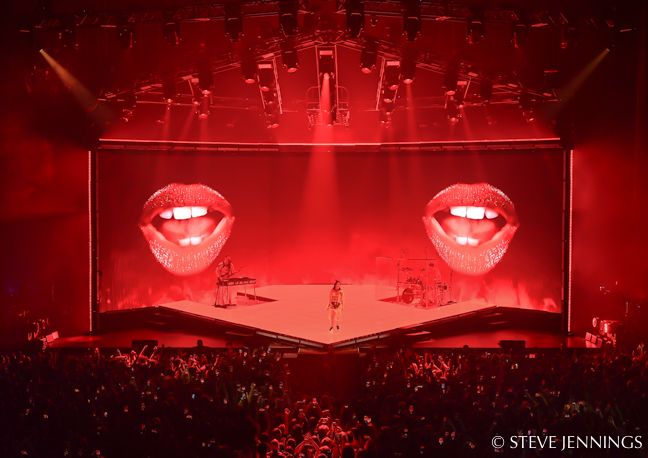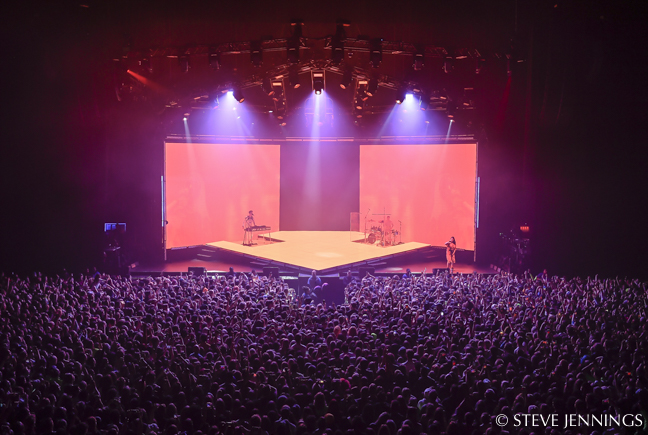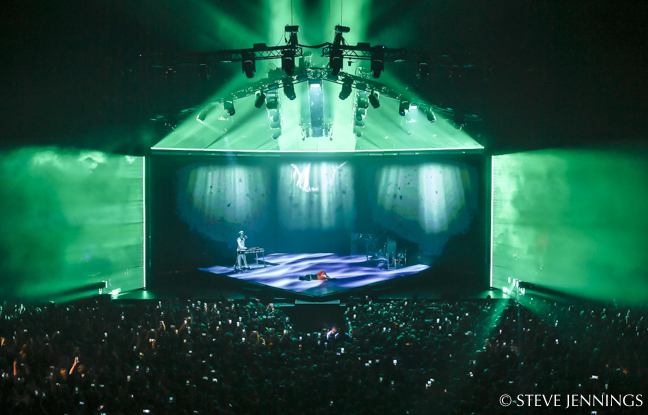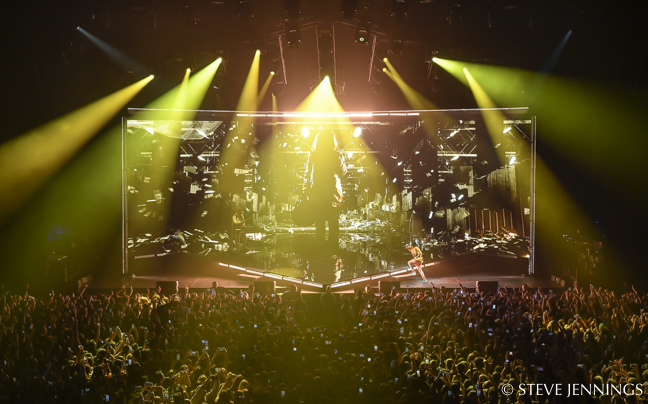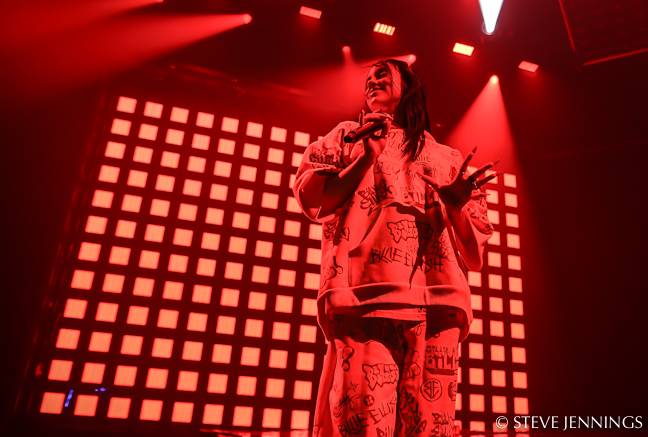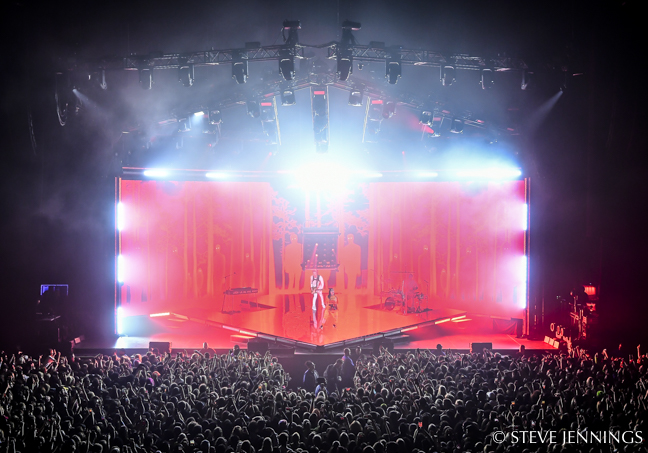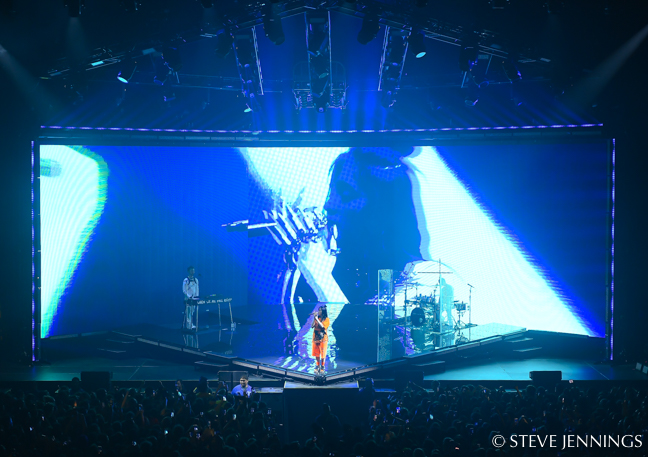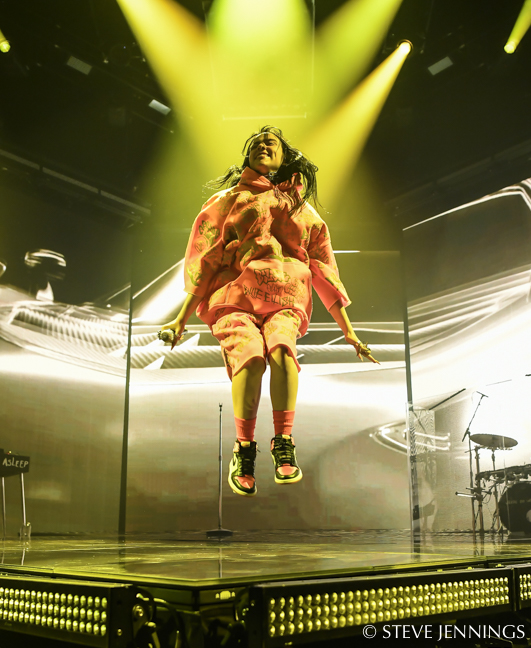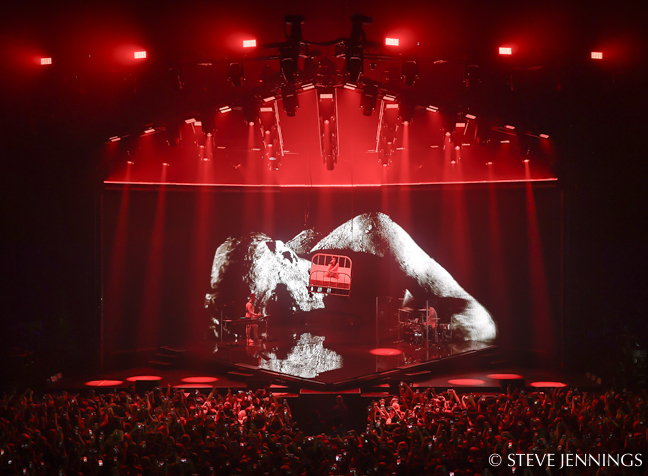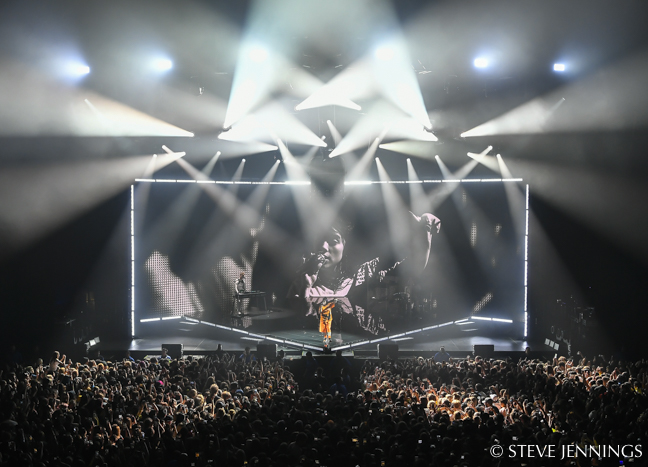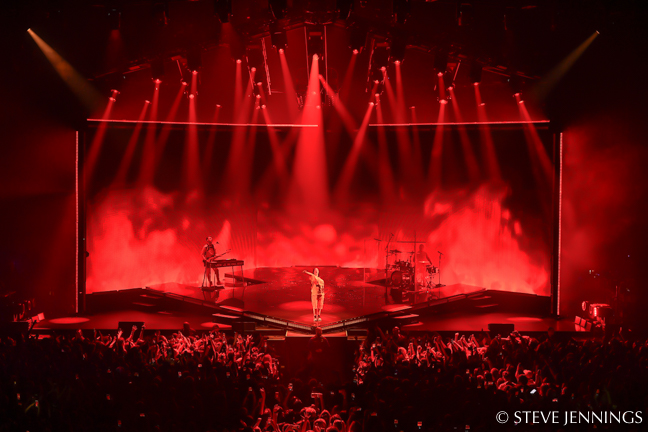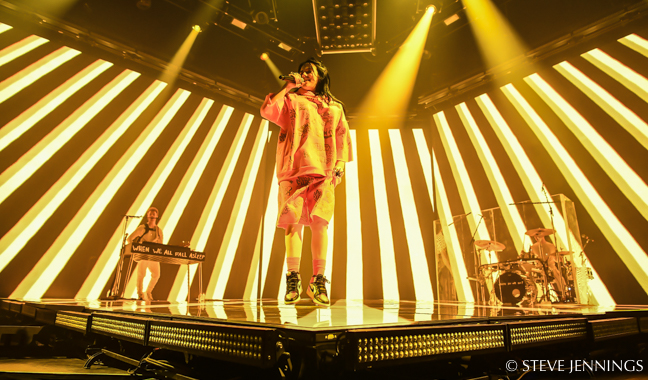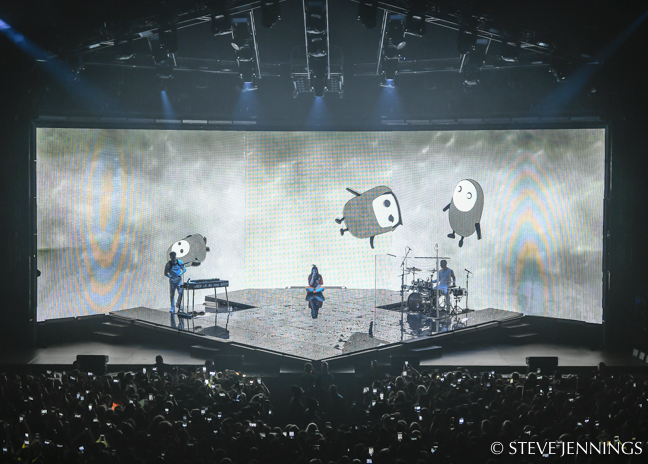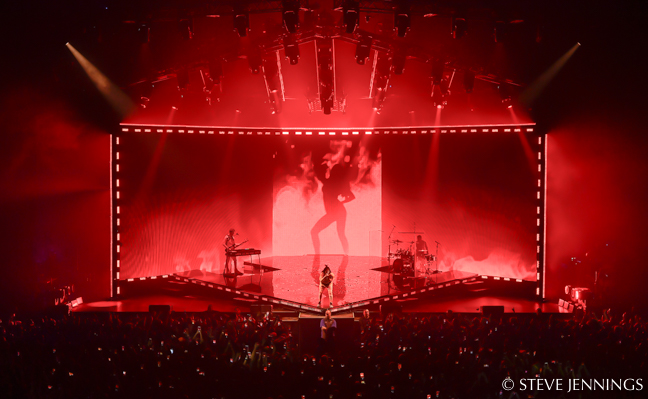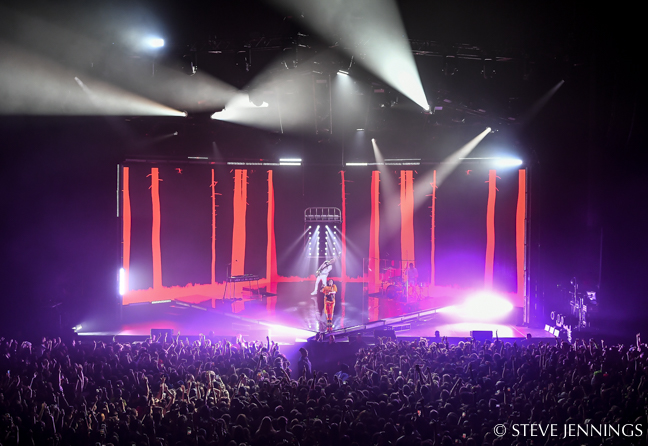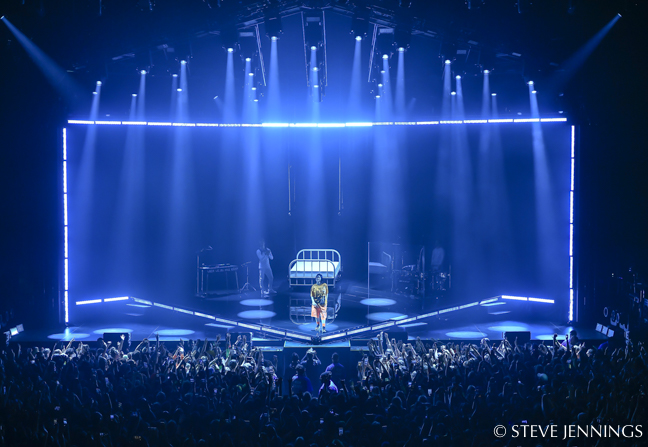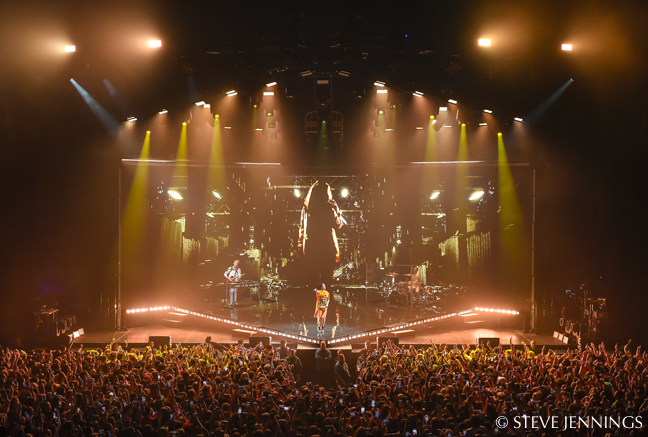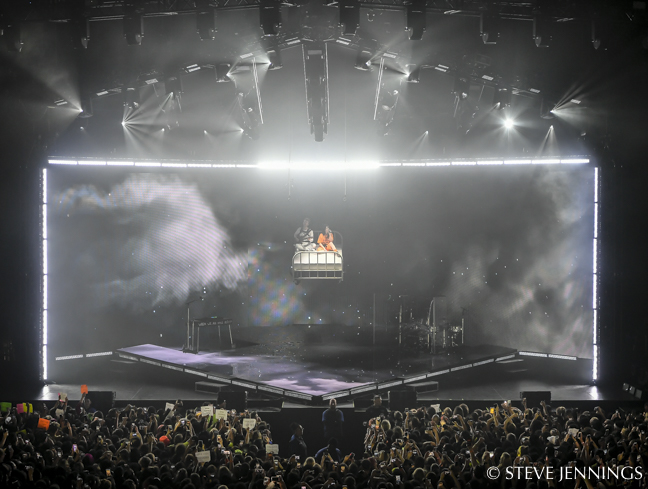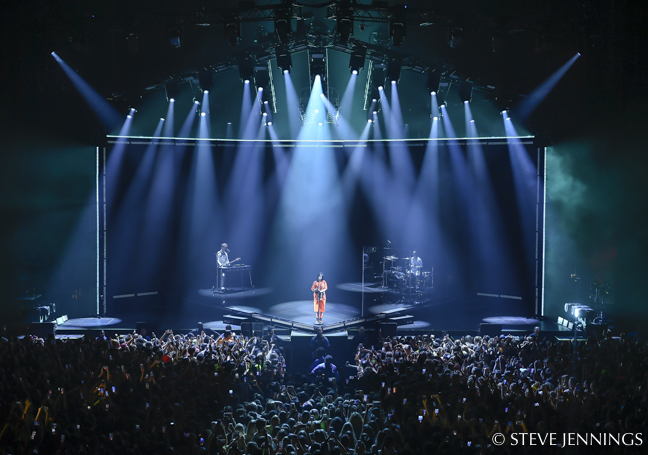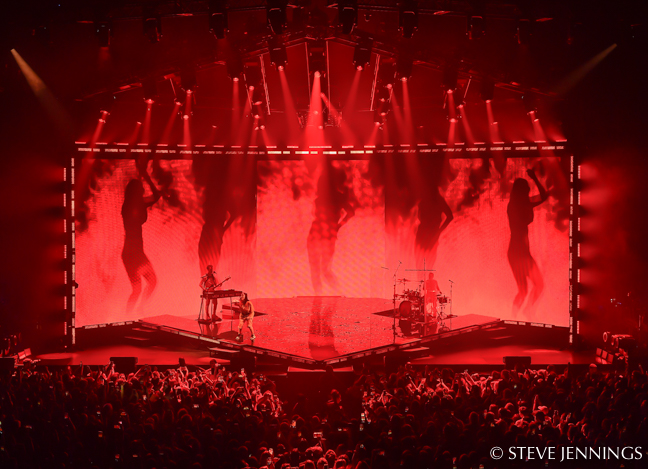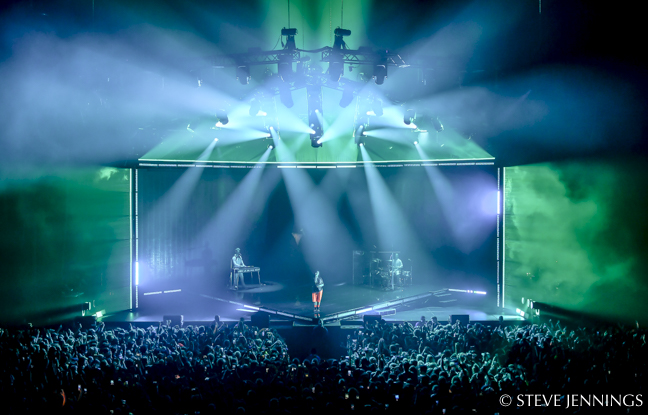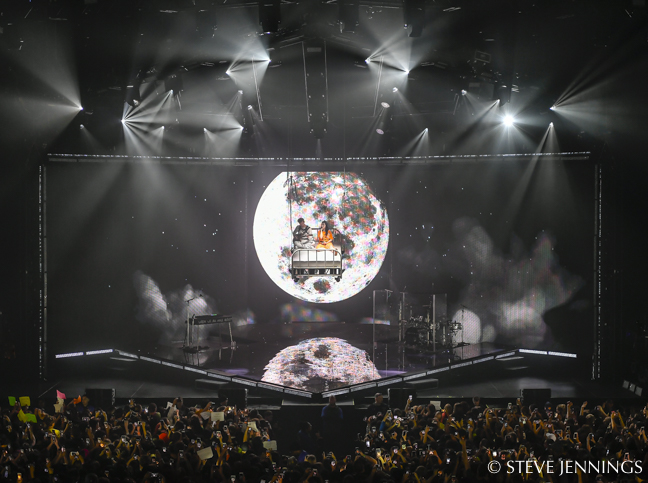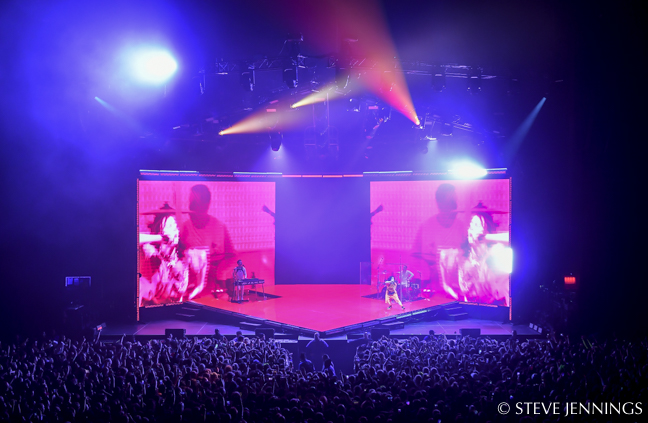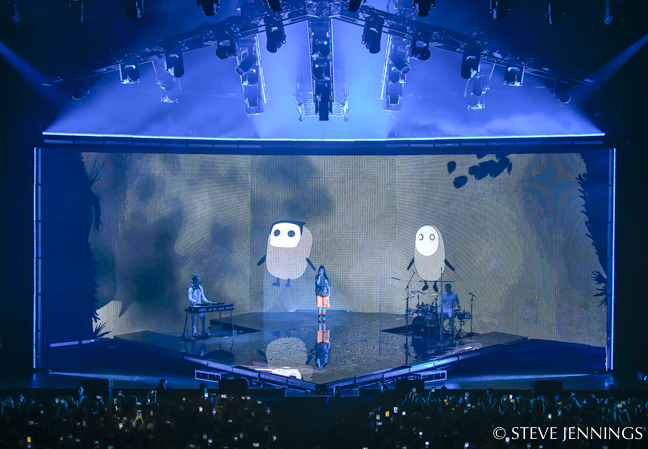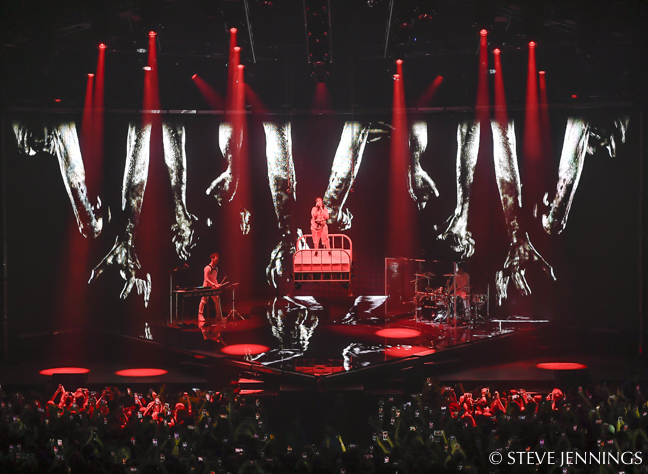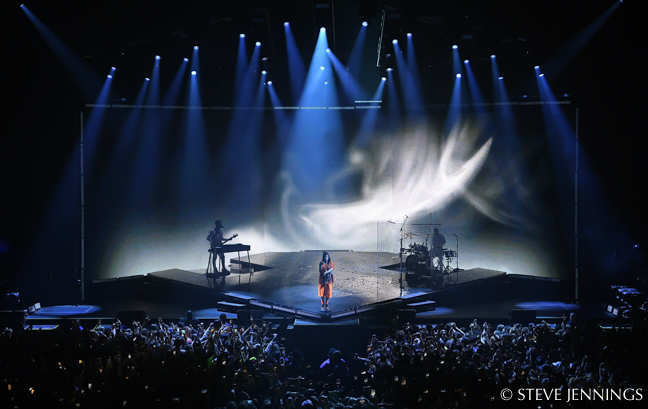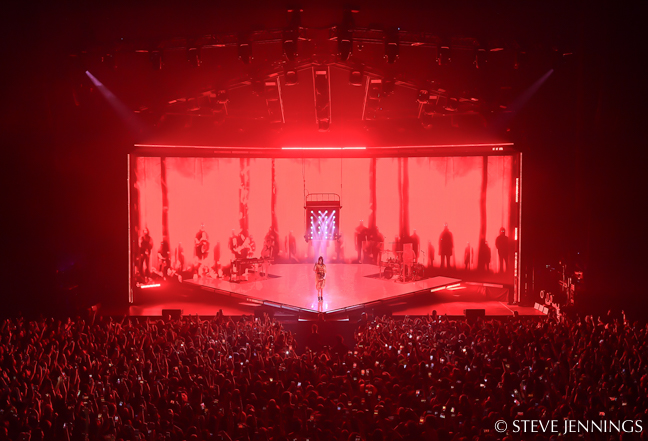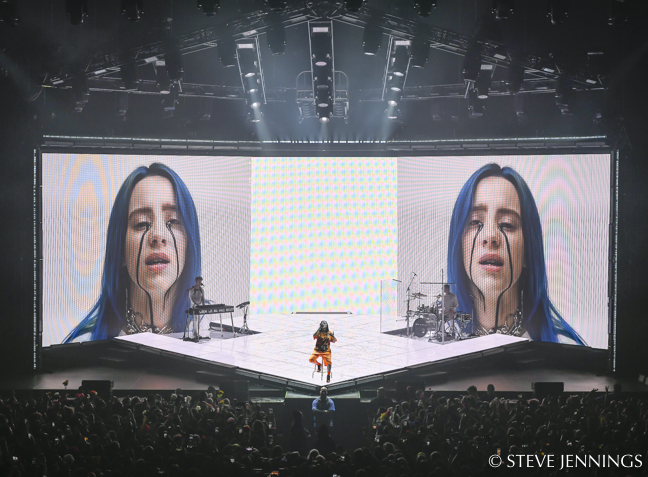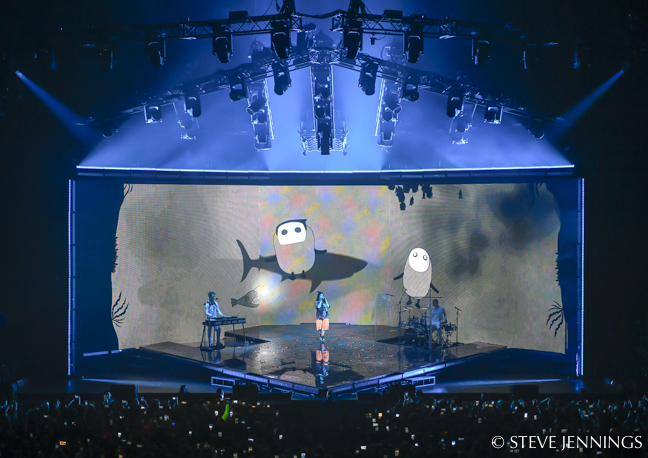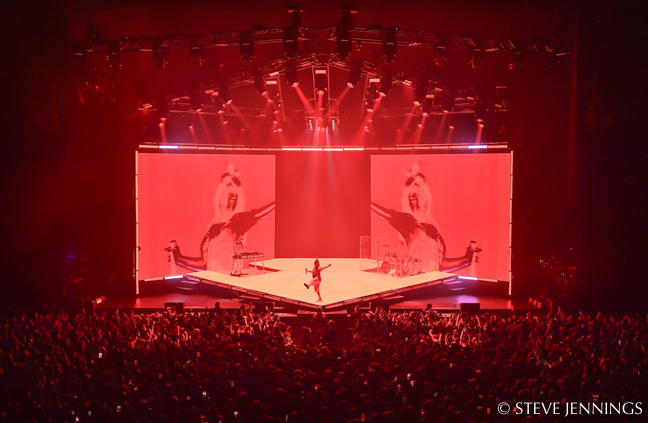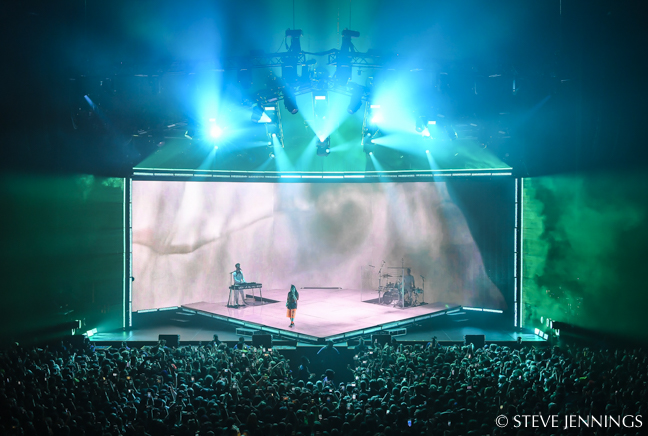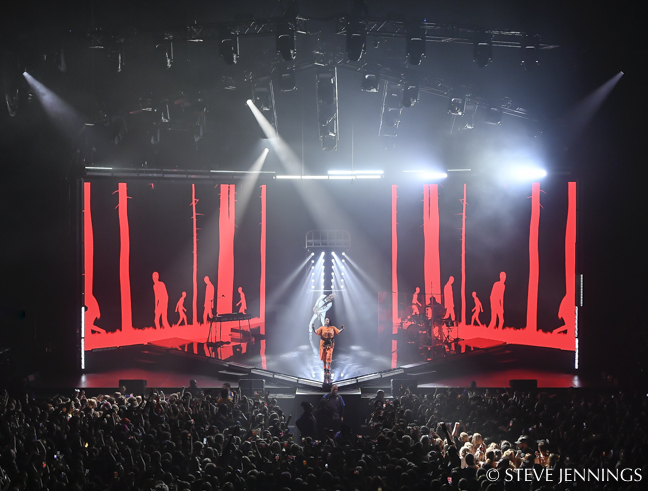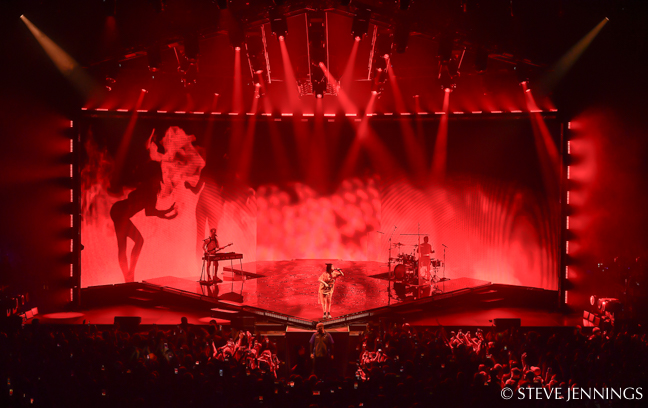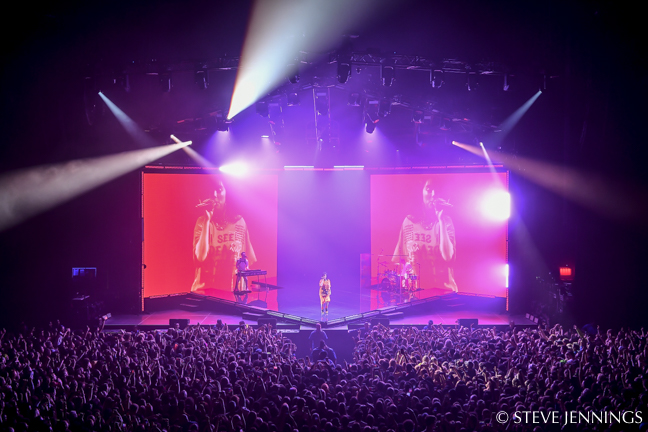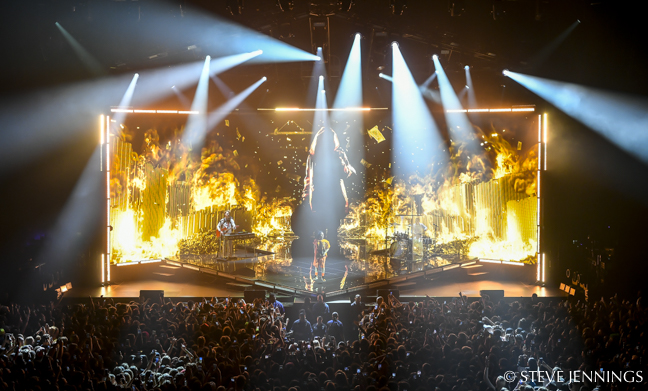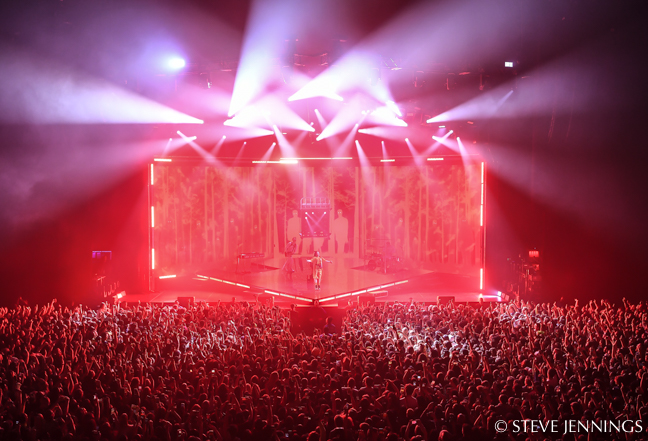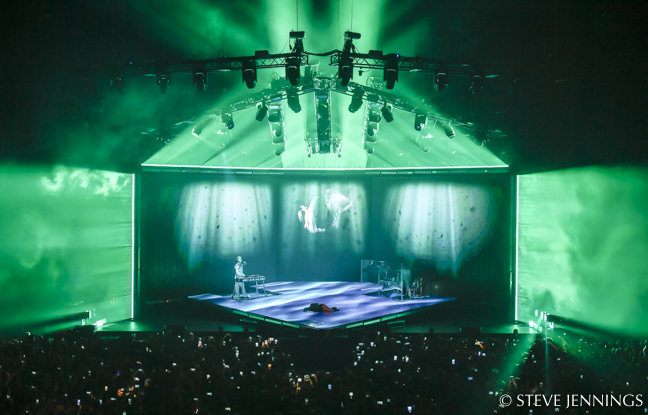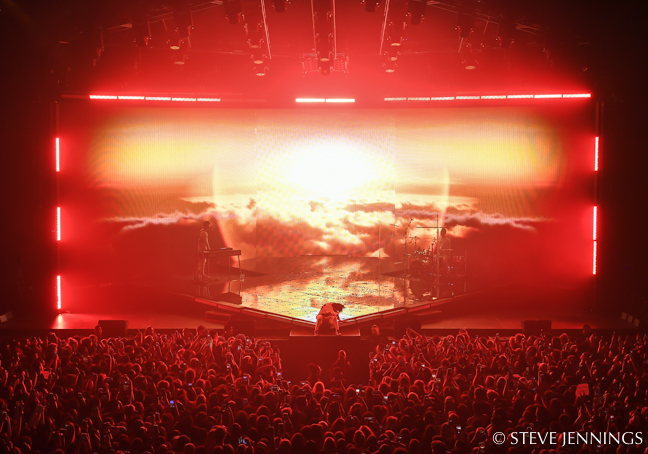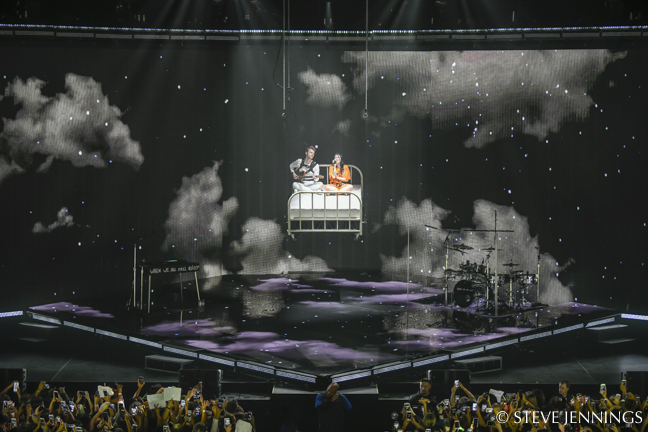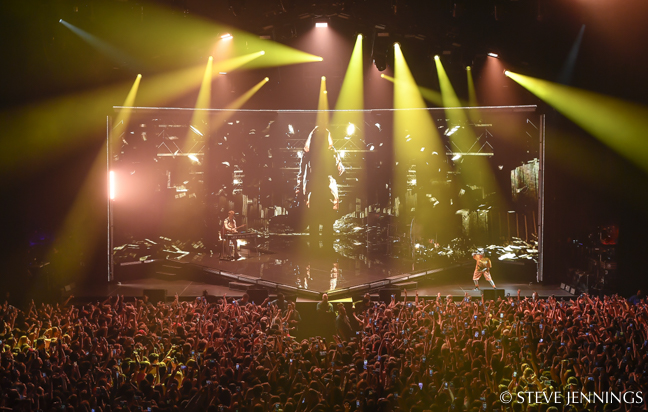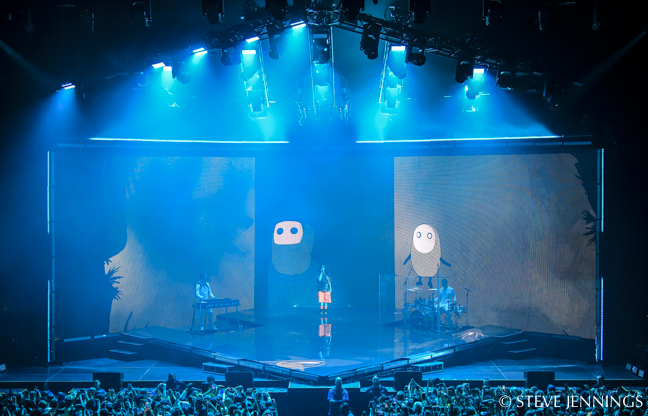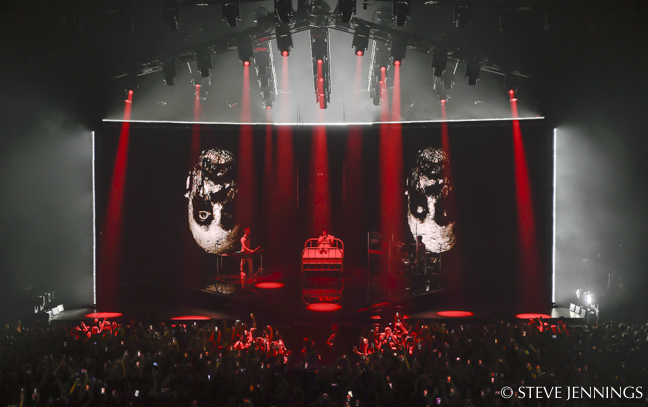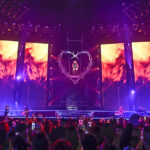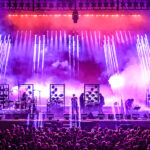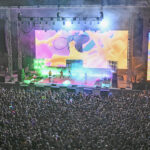
When We All Fall Asleep, Where Do We Go? World Tour
Seventeen-year-old singer-songwriter Billie Eilish is touring in support of her March 29 debut album release, When We All Fall Asleep, Where Do We Go?, appearing to sell out everywhere she plays immediately. RIAA has her selling seven gold and two platinum singles. Joining Billie on stage is her brother Finneas O’Connell on vocals, keyboards, guitar, bass and computer. We spoke with creative director / production & lighting designer Erik Anderson of Cour Design, lighting and production consultant Nick Whitehouse of Fireplay and lighting programmer and director Tony Caporale, after capturing the opening of the tour right after her Coachella date.
Erik Anderson/Cour Design
Creative Director
Cour Design has been working with Billie Eilish since early 2018, which might not sound like a very long time, but you have to think about what that has looked like for Billie’s career. In the last 16 months, she went from a sprinter/trailer and her father setting up all the lighting to now — seven trucks with a 40-plus-person crew. In that same time period, Cour Design has done six completely distinct designs to accommodate the dramatic growth and her evolving aesthetic vision.
Erik Anderson notes, “she’s done more in the last year than most artists do in their entire careers, spanning small clubs to arenas, sometimes within the same month. Since we have worked with her, she has sold out every single show, so essentially every tour has been an underplay. We’ve had to constantly weigh the principles of giving her the show that reflects how big Billie Eilish actually is versus what the rooms and budget can reasonably accommodate.”
Billie is very involved in every aspect of her show, adds Anderson. Her management team keeps her extremely busy, so one of the biggest challenges is just getting solid creative time with her amidst the tornadoes of press and promo fighting for her attention. “Billie typically knows exactly how she wants each song in her set to feel, so it was our job to take those feelings and turn them into cohesive lighting, video and set elements,” he says.
“We had started talking about doing a forced perspective set design from the very first meetings with Billie in late 2017, but it never made sense with the clubs she was playing at the time. Nick Whitehouse and the Fireplay team joined us as design partners on this tour, and they suggested we re-visit the forced perspective set.
“I presented the Cour/Fireplay collaborative design to Billie in London during rehearsals for her European club tour in February of this year. She loved the design and we were given the immediate sign off, which was great news to our teams. But then we faced the challenge of pulling the entire show together, including all video content and custom buildouts, to debut for Coachella in just six weeks. Welcome to Billie Eilish world!”
A Forced-Perspective Design
Anderson puts out massive kudos to James Miller, Tye Trussell, and Bryan Stubblefield over at Gallagher Staging for making this floor happen. “Honestly, none of us anticipated how complicated the floor build would be until the Gallagher team started drawing up the plans. We always wanted to do a video floor, but it was Nick Whitehouse who suggested we fully commit to the forced perspective by putting the entire floor on a five-degree rake. The floor is also turned 45 degrees to a diamond formation, which technically means the entire set is raked on two planes.
“From a manufacturing perspective, this meant that every custom floor set cart was completely unique and had different height dimensions at every connection. It honestly hurts my brain thinking about how they had to design those floor carts. Not to mention the short turnaround they were working on. If you see the Gallagher Nashville guys, buy them a drink!”
There was a lot to do during the 10 days of rehearsals before the Coachella date, says Anderson. He appreciated that lead programmer Dominic Smith and LD/programmer Tony Caporale were able to tackle lighting while he could work on the show direction and video content with Billie. “Dom and Tony bring an incredible amount of knowledge and experience to the table, and that was priceless when it came to our biggest lighting challenge — key lighting. Like many young artists, Billie absolutely hates feeling like she has a spotlight on her, and in the past has insisted on cutting all face wash. We knew that her fans needed to see her, so Dom and Tony used some ninja-stealth tactics to slowly work in more and more downstage wash as rehearsals progressed. Billie is also synesthetic (i.e., the ability to “see” different colors that their brain associates with letters, numbers or emotions —ed.). Therefore, every song has a very distinct color, and she usually wants to stay completely monochromatic for each song. That gave us a great foundation to work from, but sometimes caused the set to feel very flat in a single color palette. Dom was great about working in very mild color contrasts to give the performance more depth without betraying the artist’s visual desires. By the end of rehearsals, we had a varied depth of color schemes and were completely lighting the artist with [PRG] GroundControl spots. Success!”
“It was great to work with Looch,” Anderson continues, referring to PRG account rep Anthony “Looch” Ciampa. “PRG/VER had been supporting Billie since early in her career, so we were happy to continue working with them. The most important visual elements of this show revolved around a solid video product and a whole lot of strobes to frame it out. We wanted the audience to still see the outline of her stage when they wake up the next morning. The lowered bed/rig was always meant to have an important moment, because it’s the portal that transports us from the very start of the show in the intro visuals. It comes back later as a lighting fixture, and also as a character that takes possession of Billie at one point.”
Anderson also credits the designers behind the tour’s video content. “Bottom line, this show would not have looked as good, if not for Comix. Tom Brightman led the creative from Comix’s end and churned out fantastic content. [Comix owner] Harry Bird also collaborated on the content.
“Billie is extremely particular when it comes to her visual representation, so it took a particular team to interpret her feedback and deliver content that made her happy. I approached the Comix team in London before we had even presented the final design to Billie with a general creative direction that we wanted to achieve — essentially transporting the audience song by song from one dream (or nightmare) to the next, and they were able to put together a solid content treatment that they completely delivered on.
“The Billie Eilish touring world presents some extremely unique production obstacles and also exciting creative opportunities. There is an immense amount of electricity around Billie, and it’s wonderful to see everyone coming together with the common purpose of pulling off an incredible show. Big thanks to Tony Caporale and Lewis Benfield who are out there quarterbacking the visual side of this show for us.”
Nick Whitehouse/Fireplay
Production & Lighting Design Consultant
Nick Whitehouse at Fireplay notes he’s friends with Erik Anderson and Gordon Droitcour of Cour Design, and that they had been searching for a project to work on together. Billie was a fast-growing client of theirs and was quickly outgrowing her current design, so Erik thought it would be a good project for Fireplay and Cour to team up on. Fireplay helped support Cour’s creative vision by taking their concepts and ideas and working them into a physical design and creating the bid packages. With a very back-and-forth collaboration between Cour and Fireplay, Whitehouse notes that they seemed to work more as partners on this project than as consultants.
“Cour led this and were the overall creative and in charge of logistics,” says Whitehouse. “They interfaced with the video content company Comix and also put the lighting director Tony [Caporale] in place. Erik has a great relationship with management and Billie, and he was the client-facing creative director at all times. Erik led the story and concepts for each song and really drove the initial concepts for this project. Fireplay took those ideas and did what we do best — turned them into something a bit special, providing the physical design of the production (based on Cour’s direction) and lighting design.
“We also provided the majority of the renderings, CADs and the storyboard deck, like a strong back end to the design process. Finally, we provided key vendor relationships to enable us to produce our vision for the budget and provided Dom Smith as lighting programmer for rehearsals and the first show to support Tony.
“It was a bit of a challenge to get the open cube video look to work, and we went though many options to finally make it right. By working together and with our vendors, we managed to find a solution that worked well. Once the video design had been settled, it was relatively easy to place the lights around the frame, which we really wanted to highlight. Billie loves strobes and side light. That’s why the design is heavy on these fixtures and relatively light on a traditional overhead lighting rig.”
In conclusion, Nick adds, “New talent in our industry is a very needed and important part of keeping what we do innovative and different. Working with Cour and Comix really showed me a fresh approach, a young eager team can really drive us to push boundaries and stay at the top of our game. I think it’s important to encourage this.”
Tony Caporale
Lighting Director/Programmer
For lighting programmer and director Tony Caporale, everything stayed consistent leading through preproduction and rehearsals. “The first shows we had after we finished rehearsals were at Coachella. These were huge shows for Billie, so we definitely wanted to be locked and loaded as far as a set list was concerned. With the stage logistics, we had to be ready for anything, especially for Coachella, where winds can be — and did — become a problem for us the second weekend. So we had to adapt and modify quickly. Kudos to all departments involved at Coachella and the tour. They are the offensive line, man. Without them, we aren’t scoring touchdowns.”
Caporale notes the show is timecode- and cue-heavy. He says when it comes to the visual of the show, Billie is super keen on having all the intricacies of the music that she and her brother Finneas create accented in detail for both lighting and video. “It was my first time working with Dominic Smith, our lead programmer, who was brought in by Fireplay. Dominic brings an elegant touch to the table. He taught me some really cool techniques both he and Nick like to use on projects. We soon developed a tandem [approach], programming together as the programming phase chugged along. We each worked on a grandMA2 and linked timecode to video world.”
Video world was separately running disguise gx2 media servers and numerous cameras, operated by Lewis Benfield, tour video director, Notch designer and disguise programmer. “Lighting and video being separate allowed us to have great flexibility programming our respective departments. We would trade off certain beats and knew how to complement each other to keep it fresh,” notes Caporale.
“I can honestly say this is the most fun I’ve ever had working on a show. Most of the folks on Billie’s crew have been with her from the ground up, grinding it out. They work their tails off, day in and day out, which sets the standard for the work ethic we put into this show. From a visual standpoint, we get to develop unique looks for the show you don’t see at most pop shows. From an audience perspective, the fans are so dedicated to Billie that I get to watch a very special bond form between them every night we do a show. Witnessing this just creates this anticipation you don’t see with most acts anymore. I’m super proud to be a part of this ride.”
Billie Eilish When We All Fall Asleep… World Tour
Crew
- Production & Lighting Design: Cour Design/Fireplay
- Creative Director: Erik Anderson/Cour Design
- Lighting Director & Programmer: Tony Caporale
- Lead Programmer: Dominic Smith
- Lighting Co: PRG/Anthony “Looch” Ciampa
- Lighting Crew Chief: Jim Keegan
- Lighting Techs: William “Flash” Rogers, Lindsey Norman,
- Nate Plotsky
- Tour Manager: Brian Marquis
- Production Manager: Bill Leabody, Nicole Massey/Leabody Inc.
- Set/Stage Designer: Cour Design/Fireplay
- Stage Manager: Jayy Jutting
- Video Co: PRG
- Video Design: Cour Design/Fireplay
- Video Director & disguise Programmer: Lewis Benfield
- Video Techs: Tyler Thorton, Michael Boggs, Gerald “G” McDougal II
- Video Content: Comix (Tom Brightman, Harry Bird, Sam Hodgkiss, Josh Gallagher, Lewis Benfield)
- Staging Co: Gallagher Staging/James Miller, Tye Trussell
- Automation Operator: Ryan Mas
- Rigger: Rai Rathor
- Carpenter: Patrick O’Connell, Nate Poort
- Trucking Co: Upstaging
Gear
Lighting:
- 2 grandMA2 Full consoles
- 60 PRG Best Boy HP Spot
- 52 Solaris Flare LR Q+
- 56 Solaris Flares
- 32 GLP X4 Bar20’s
- 20 Ayrton MagicDots
- 4 Radiance Hazers
Video:
- 332 WinVision 9 Air LED wall
- 181 ROE Black Marble BM4 Glass LED floor
- 5 ROE Black Marble BM4 Triangle LED floor
- 1 disguise GX2 server setup
- 1 Blackmagic Design 8×8 switcher
- 1 Lightware 8×8 matrix
More Billie Eilish 2019 tour photos by Steve Jennings:
